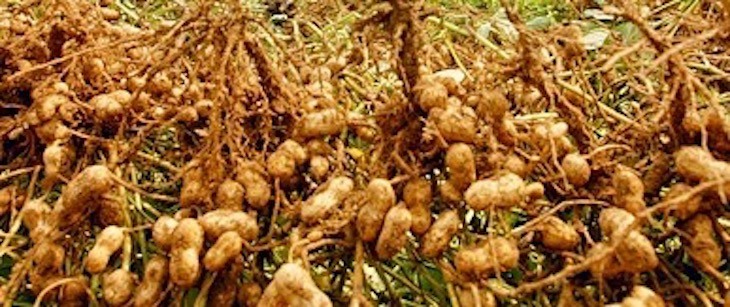Hurricane remnants may have aided peanut farmers; cotton quality might be downgraded
by October 30, 2024 2:34 pm 320 views

Photo courtesy of John David Mercer.
Arkansas was not directly impacted by hurricanes that hit Georgia, North and South Carolina, Tennessee, Florida, and others several weeks ago, but remnants of those systems did have the potential to affect growers in the eastern part of the state.
Those systems produced heavy rains and winds in the Natural State, and it may have aided peanut farmers.
Zachary Treadway, extension peanut and cotton agronomist for the University of Arkansas System Division of Agriculture, said that when Hurricane Francine drenched eastern Arkansas counties in mid-September, many peanut growers counted themselves lucky.
“Peanuts are primarily grown in two areas of the state,” Treadway said. “The northeastern most counties, and then down near Marianna. Up north, the soil is very sandy, so most of that rain just ran through the profile without causing problems for peanuts, most of which were still in the ground.”
“Down south, where the soil is heavier, with a lot of clay, some of the growers got ahead of the storms and used the rain to their advantage,” he said. “They dug their peanuts out, and let the rain wash them clean, which made threshing a little easier.”
As of last week, the U.S. Department of Agriculture reported that 81% of the state’s 40,000 acres of peanuts had been dug from the ground, and 45% had been harvested. Both numbers are roughly in keeping with the state’s five-year average.
With brisk fall weather sweeping in last week, however, some growers in the northeastern counties paused their harvest, hoping to avoid frost damage on peanuts that had been dug but not yet harvested.
“In Marianna, they’re rolling hot and heavy. They’re using this good weather to really put a dent in some acres,” Treadway said.
The state’s cotton crop, however, has not been as lucky. Rainfall of more than a foot fell in some areas of eastern Arkansas at a time when cotton bolls were opening, causing plants to lose the entirety of their boll fiber in some cases.
“In the northeast, we definitely took a lick from both hurricanes,” Treadway said, referring to Francine and Hurricane Helene, which made landfall in Florida on Sept. 26. “Cotton that had not been defoliated saw a fair amount of lay-over with those winds, and the plants being so top-heavy. But those plants seem to have stood back up very well.”
“With cotton bolls that were already open, we saw a lot of ‘dripping cotton,’ where it looks like the cotton is dripping out of the boll,” he said. “In the best case, the picker can still get that cotton from the boll. Worst case, that cotton was washed out of the boll and ended up on the ground, and that’s lost altogether.”
“We may see some quality issues, once this crop is ginned and classed,” he added.
Treadway said that overall, however, the state’s cotton crop still looks promising.
“I like what I’m hearing from those with early-planted cotton,” he said. “Some growers are saying their late-planted cotton is looking even better. I think we’ve fared as well as we could have hoped, given what we’ve faced, all year long.”
